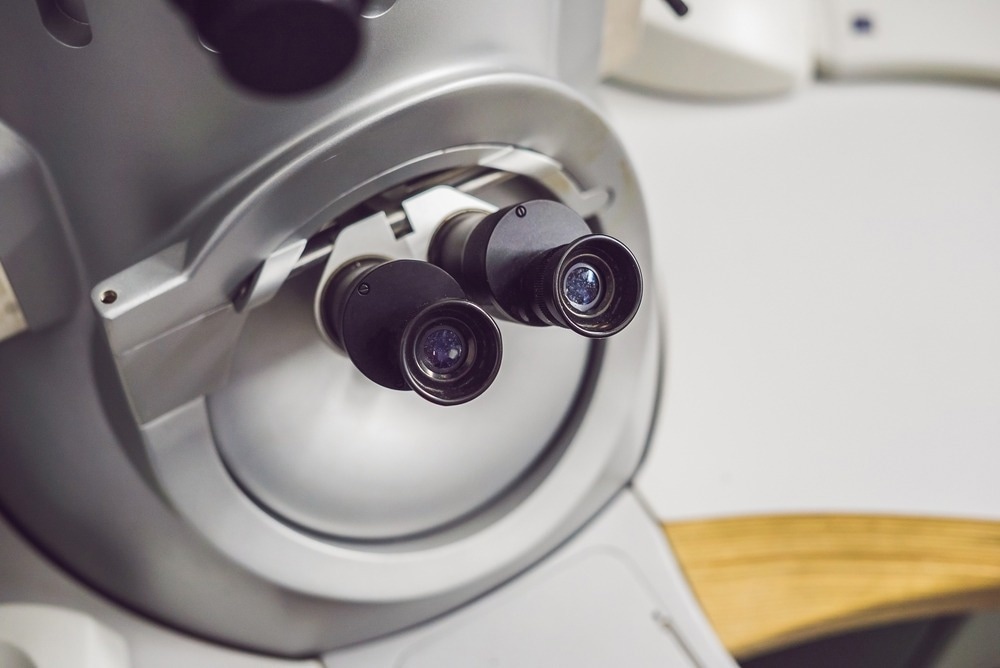Even though electron microscopy could already disclose details as small as one nanometer, existing research aims to break through barriers restricting image quality and decreasing the optical dose present in the samples.

Image Credit: Elizaveta Galitckaia/Shutterstock.com
As far as electron microscopy is concerned, aberration is a general problem capable of decreasing the resolution and quality of the images produced. Extra amplitude controls and complicated phases are required in such microscopes.
An international research group headed by Akhil Kallepalli (Kallepalli Lab) collaborating with the Optics Group at the University of Glasgow set forth to fulfill the issue. The researchers developed and tested a new ghost imaging algorithm that functions from an optics point of view.
The algorithm discovers that researchers could generate an image with enhanced resolution and contrast with the help of lower flux illumination, which could help decrease sample damage.
The study was reported in the journal Intelligent Computing on December 21st, 2023, a Science Partner Journal.
Optical modulation is required to obtain improved control of illumination strategies. In optics, modulation is altering the properties of light waves to encode data. It has been utilized in optical communication systems and several applications, like imaging and spectroscopy. Modulators of several types have been available in the field of optics for a long time.
But for electron microscopy, modulators are not provided. It is still difficult to obtain complicated phase and amplitude control to decrease phase aberration for constant imaging improvement in the field of electron microscopy.
A so-called computational ghost imaging, an optical method, was applied by the authors to electron microscopy and further came up with a new algorithm for this issue to be addressed. The method reverses the understanding of the projected patterns and their quantified transmission for the image to be reconstructed. Also, this could be utilized to quantify the sample’s transmittance while being illuminated with highly complicated spatial patterns.
As far as this system is concerned, the consequent form of the light field in the plane of the object could be assessed with the help of numerical beam propagation methods allowing both far-field and lens-free implementations. Hence, computational ghost imaging could be utilized for transmission electron microscopy imaging.
In optical methods, it is possible to use spatial light modulators to guarantee the orthogonality of the imaging patterns. But it is hard to ensure orthogonality between patterns while making use of natural scattering or highly restricted modulators.
This new algorithm developed by the authors makes the utmost use of patterns irrespective of their orthogonality. They term their new technique “orthogonalized ghost imaging.”
Two approaches were employed by the authors for their method to be tested. Initially, the authors performed an optical experiment similar to the transmission electron microscopy system. This experiment assessed the illumination strategy and the powerfulness of the algorithm to non-orthogonality. Following that, they tested their method with the help of transmission electron microscopy.
The experiments displayed that the ghost imaging algorithm created by the authors helps produce a higher-resolution image reconstruction with improved contrast compared to the most general online ghost imaging algorithm.
The newly-developed algorithm helps improve the imaging abilities at any given wavelength and is also strong to the non-orthogonality of the pattern sets. This allows efficient application in both electron and optical microscopy.
In an appendix to their study, the authors emphasize a few findings concerning electron microscope sample damage, which could be decreased using their method. Future development could be utilized to improve imaging resolution or speed further throughout both electron and optical microscopic imaging.
Kallepalli’s co-authors are Lorenzo Viani, Enzo Rotunno, Paolo Rosi, Stefano Frabboni, and Vincenzo Grillo of CNR-NANO, Modena, Italy; Daan Stellinga of the University of Twente, Enschede, The Netherlands; Richard Bowman, Graham M. Gibson and Miles J. Padgett of the University of Glasgow, Scotland; Ming-Jie Sun of Beihang University, Beijing; and Roberto Balboni and Andrea Migliori of CNR-IMM, Bologna, Italy.
This study was financially supported in part by the European Union’s Horizon 2020 Research and Innovation Program, the Royal Society EPSRC Research Council, and the National Natural Science Foundation of China.
Journal Reference:
Kallepalli, A., et al. (2022) Challenging Point Scanning across Electron Microscopy and Optical Imaging using Computational Imaging. Intelligent Computing. doi.org/10.34133/icomputing.0001.